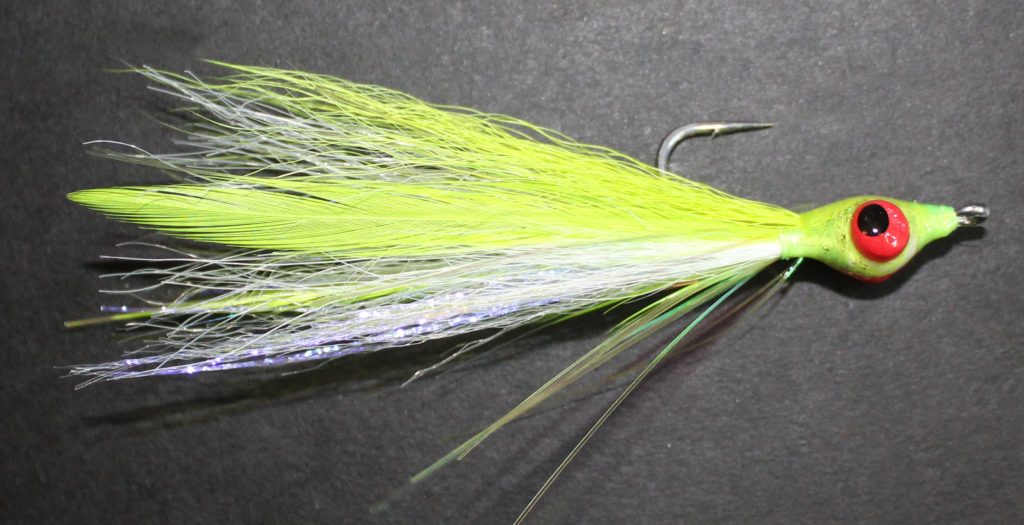
Given the Holidays and busy schedules, this month we are going to combine both classes and meet on Wednesday night, Dec. 20, at 7:00 PM. Our guest tier is Dan Neuland and he will teach us how to tie the half-n-half.
Here’s information from Dan about the fly:
“In recent years, my fly fishing and fly tying focus has shifted onto the waters of the Chesapeake Bay and its tidal tributaries. It is no secret that the Clouser Minnow and Lefty’s Deceiver are two of the best general saltwater patterns. So, it should be no surprise that a combination of these two classic patterns would be just as or even more effective than the originals. I first discovered how effective this pattern was while striped bass fishing with guide, Kevin Josenhans on the Susquehanna Flats in April of 2017. It was the color pattern of white and chartreuse that I took note. Since then, I have used my version of this fly to catch stripers on both sides of the Chesapeake Bay including locations such as Fletcher’s Cove on the Potomac River, Jane’s Island on the Tangier Sound, the Severn River and at Sandy Point State Park. In addition, I have caught many other saltwater species with this fly such as blues, red drum, sea trout, Spanish mackerel and others while fishing with Bill Kulp off the coast of North Carolina. PVFF member, Mark Richardson uses a smaller version with the same color pattern to catch some impressive smallmouth bass on the Monocacy River each spring. This fly is a must-have addition to both saltwater and freshwater fly boxes!”
I hope you can join us. This is open to everyone. The club will provide all of the materials and hooks. We will meet in Room 108 at Trinity Church. Interested? We would love for you to join us. Just let me or Don Fine know. You can sign up on our website or you can email me at lbforte@verizon.net.
** Note for all fly tying newcomers. Our PVFF fly tying instruction has been broadened to provide monthly instruction for those who might never have tied a fly (i.e. true beginners), as well as for those who have some experience in fly tying and wish to expand their skills by tying artificial flies which imitate natural fish foods.
If you are planning on attending and do not already have your own basic equipment for fly tying, please let us know prior to the December 19th session, so a tying vise and tools will be provided.
By Larry Forte
You must be logged in to post a comment.